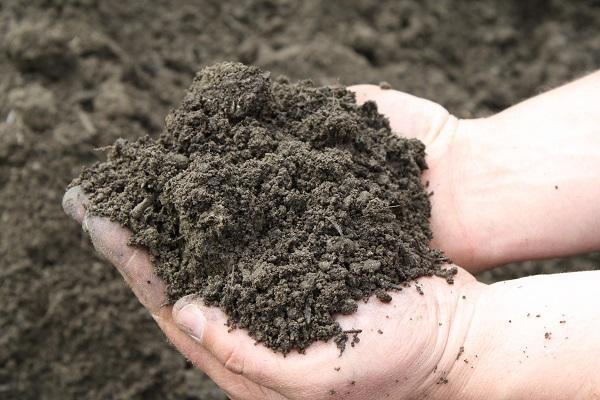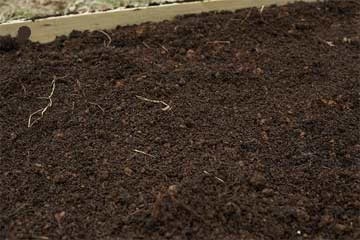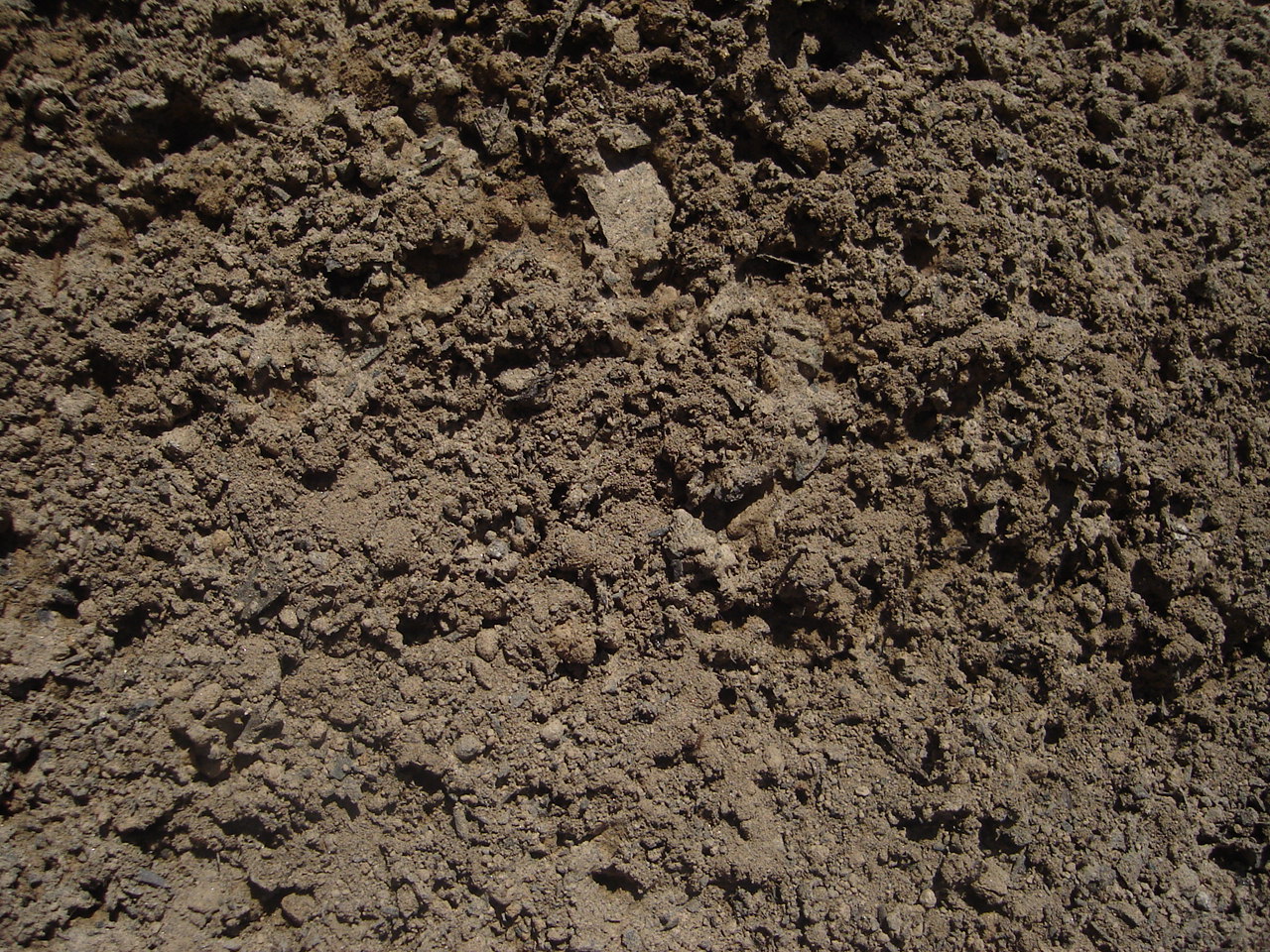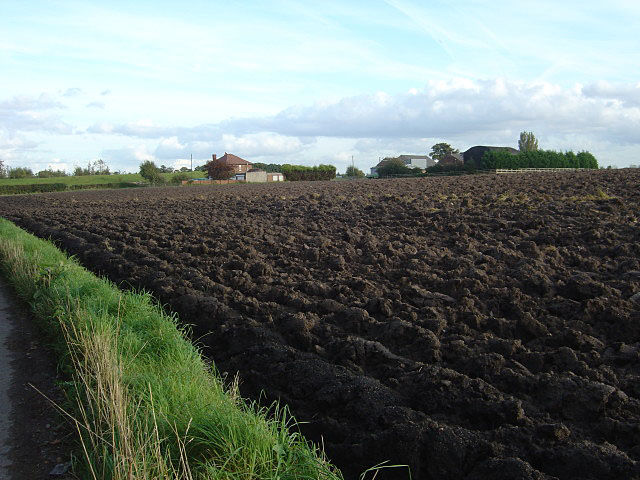Loam
Loam is a mixture of sand ( grain size > 63 microns ), silt (grain size> 2 microns ) and clay ( particle size < 2 microns ). It is formed either by weathering of hard or soft rocks or through the unsorted deposit of the said components. Differences depending on the origin Berglehm, loam, boulder clay ( glacial ), loam ( loess ) and Auenlehm ( from river deposits ). Clay is widely used and readily available, it represents one of the oldest building materials
Composition
The mixing ratios of sand, silt and clay can vary within defined limits, in small amounts can still coarser material ( gravel and stones ) may be contained therein. Clay with a significant content of lime, eg as a result little more advanced weathering or in the formation by deposition of calcareous material is referred to as marl. Clay-rich clays are referred to as bold ( not in terms of fat ), tone arms as skinny.
Properties
Clay is not so plastic and waterproof as pure sound, since the grain size of the sand and silt components is larger. In the wet state is malleable clay, firmly in the dry state. With the addition of water swells clay shrinks during drying or it will shrink, what should be considered particularly in earth building. Clay as a building material stores heat and has a regulating effect on the humidity.
Formation
Natural Lehman collections in Central Europe are mostly glacial deposits of fine material angewehtem by wind from the steppe-tundra. This dust ( loess and sand) resulted from glacial grinding activity, was transported by rivers and Gone due to seasonal drying.
Soil formation on clay
Due to the high proportion of weatherable minerals, which is also accompanied by a good storage capacity for nutrients and water, resulting from clay generally fertile soils.
Clay as a building material
Clay is the oldest used in construction binder, next to the oldest wooden building materials ( rammed earth ) of the people and, with lime - and since the beginning of the 20th century cement - the most important mineral building materials. In modern brickworks building material derived from clay pits is brought into different tile shapes and baked to increase the strength.
Clay is also used unfired: earth building techniques have been known for more than 9000 years, and today approximately one third of the world population lives in mud houses. Large buildings were made of mud and clay bricks, such as the Great Mosque of Djenne in Mali or the ziggurat of Chogha Zanbil in Iran today.
In most buildings, which were built in lime-poor regions of Germany before 1950, there is clay, such as in half-timbered houses, at least in interior walls, as clay plaster and partially in the basement ceiling. Coating of mud is used in basements, Tennen and barns.
He is an excellent soil with moisture regulating properties. For richer ( high clay content ) clay is emaciated with reschem sand. In some villages there are still old clay pits, from which the clay was mined earlier. Since the early 1980s, clay is being rediscovered as an environmentally friendly and healthy building materials as well as a mainly employed in the interior design elements ( clay plasters, clay paints ). As it cures only physically ( and not chemically abbindet like most other building materials), it must be protected from the weather in Central Europe used outdoors.
An exception are the Strohlehmwände in central Hesse. This refers to earth-based coatings cut short, overlapping eingebundenem straw that have been appropriate for weather protection on the weather side facing timbered walls of houses, barns and stables.
Loams that are suitable for burning, are generally sandy clays, about Ziegellehm as a starting material for burning bricks. Clay can be used for the construction of clay ovens or for plastering of wall heaters, since clay as most heavy materials has good heat storage properties and can be used with hot objects. This allows - due to its purely physical hardening - such as floor and wall heating systems with low flow temperature.
In energy- efficient buildings, which should suffice to biological claims, wall heaters are used, for example under clay plaster in combination with solar thermal unit.
However, study of the Helmholtz Zentrum München According to a clay can also weed out high doses of radioactive noble gas radon. We investigated a house in Franconia, where the measured values suggest that over a year daily at ten hours stay would occur a load of 1.6 millisieverts. For larger houses of clay, poor ventilation can lead to a radiation dose of up to 4.6 mSv per year. This finding is controversial and attributed to measurement of a half-timbered house, located in an area with elevated soil radon concentration. According to the Federal Office for Radiation Protection, were " ... found no usable for construction materials in Germany, which may result due to increased thorium concentrations to higher concentrations of radon -220 ( thoron ) in rooms. "
In the foundry clay serves as a molding material for the production of Lehmformen for casting production. With the development of the iron foundry in 1300 which forms one of the first molding in clay. The Lehmformtechnologie means complete model equipment was largely replaced only by the shapes using templates and models has in its bell foundry applications. Importantly in this molding process, certain Moulding sand additives which reduce the negative symptoms in the form of drying and later create opportunities for delivery of the casting gases, while the metal is poured into the molds.
Clay in Naturopathy
Clay is used in the form of Lehmwickeln in naturopathy. He has a strong degreasing effect and will act " ausleitend " on liquids. Brought directly to wounds, clay is cleansing and detoxifying. It is attributed to him pathogens and toxins binding effect.
Clay as a biotope
In the animal kingdom, for example, the Lehmwespen build their nests primarily with or in clay. The muddy banks of streams or rivers, some prefer birds as site for their nests, such as the Sand Martin. Many insects, such as some species of spiders build their burrows in clay, as well as some snails.
Due to its water-bearing properties of clay is the base of many wetlands, such as occur in many floodplain. The existence of several Moore is tied to the occurrence of argillaceous clay, such as in the High Fens.
Clay in the terrarium
In terrariums, especially in deserts and dry terrariums, clay is used in two ways:
In addition to the natural optical properties, clay is like in earth building positive effect on the indoor climate. Clay regulates the humidity at the appropriate for terraria value of 20 to 30%.
The name derives from
Locations for clay were partially eponymous, as in the Munich area for the places Berg am Laim, Lehel and Laim, all uphill along the Isar River, where ice age winds deposited the loess of the Isar level. In Günterstal there is a Leimeweg, in neighboring Horben the Won Leimgrube or a Leimiweg.










